Dame's Rocket - How to Grow and Care for Hesperis Matronalis
Dame's rocket is a popular plant all over the world. It's easy to grow and amazes both with its multiple flowers and the magnificent fragrance, which is the most intense in the evening. The flowers attract various insects and butterflies that fly around this plant frequently. Dame's rocket doesn't have many needs, which makes it a perfect plant for beginner gardeners. Check how to care for it.
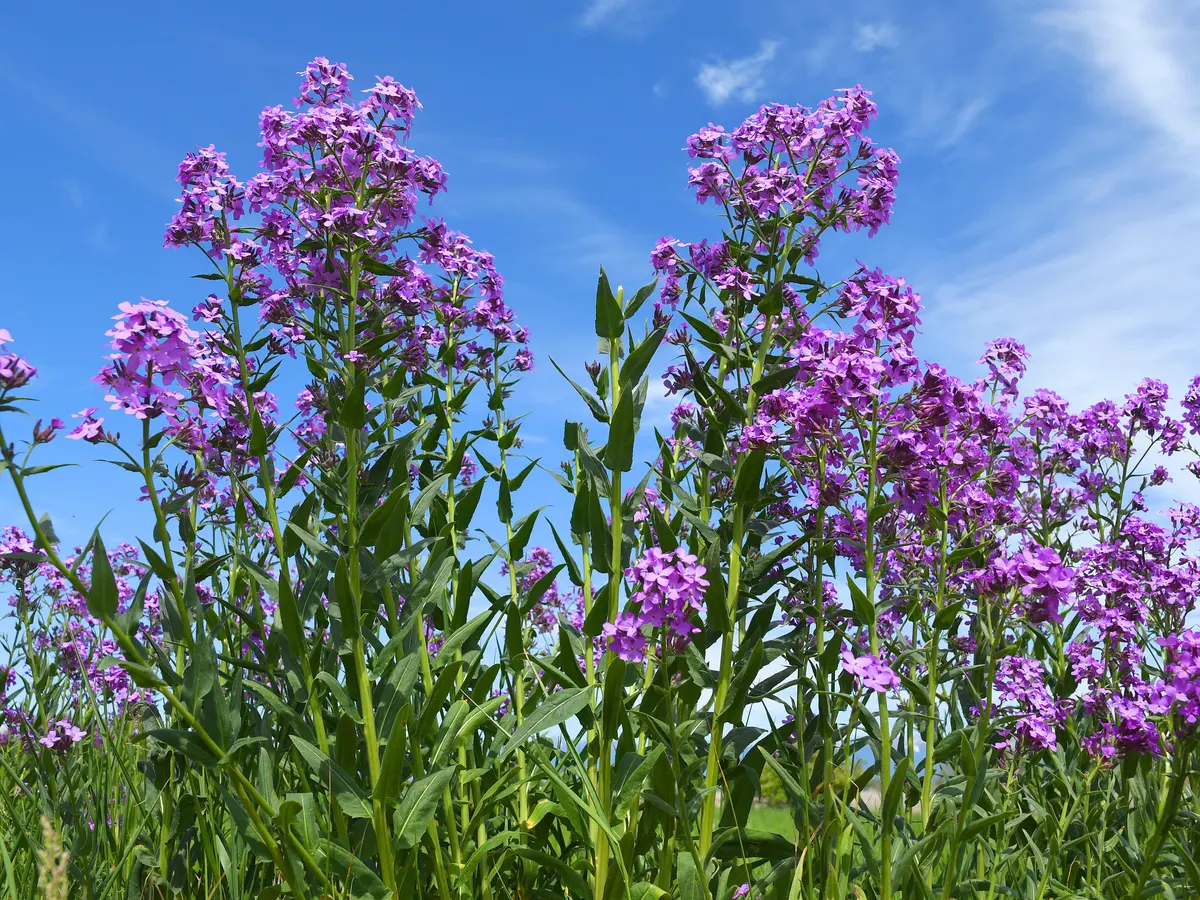
Dame’s rocket – origin and characteristics
Dame’s rocket, more precisely Hesperis matronalis is one of the oldest plant species that can be encountered in many gardens in the world. As estimated, it appeared for the first time as a cultivated plant in Ancient Rome, and it’s still highly popular in various countries – especially in Europe.
Dame’s rocket, also known as dame’s violet and damask violet, is a perennial from the mustard family. Planted in a spot in the garden, it takes two years to grow. It blooms after one year. It diminishes after three to four years from planting, so if one wishes to keep enjoying its view in the garden, it has to be rejuvenated. New plants should be added every few years.
In the first year from planting, dame’s rocket develops green leaves – don’t expect any flowers, though. Blooming begins in the second year, when the plant develops rich florescence. It grows up to 1 meter tall, which is an advantage considering the density of flowers.
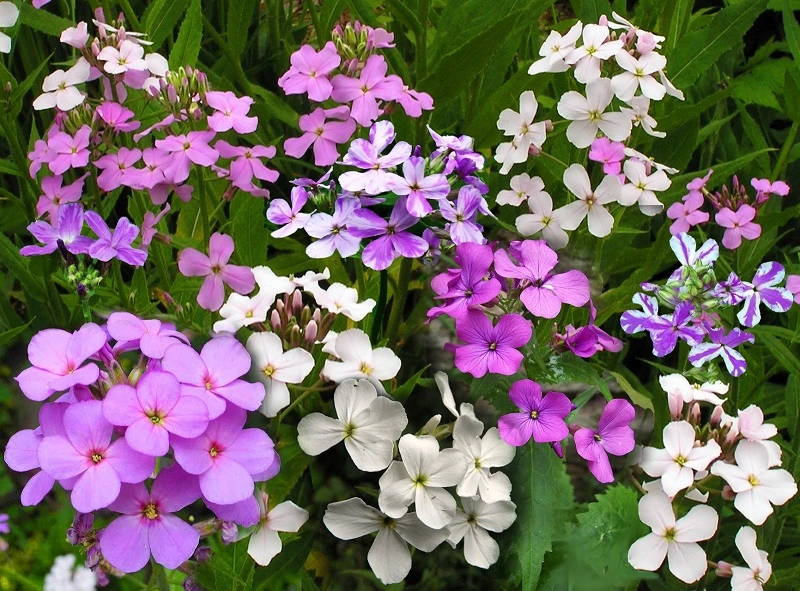
Dame’s rocket – the most popular varieties
Hesperis matronalis comes in many varieties. Three of them are particularly noteworthy, and they are the most popular among gardeners. The basic cultivar of this plant develops lilac flowers. This variety is the most common in gardens. The two other ones are:
- Alba – a popular white dame’s rocket with flowers in this color,
- Alba Plena – another variety with white flowers, but with fuller and more impressive florescence.
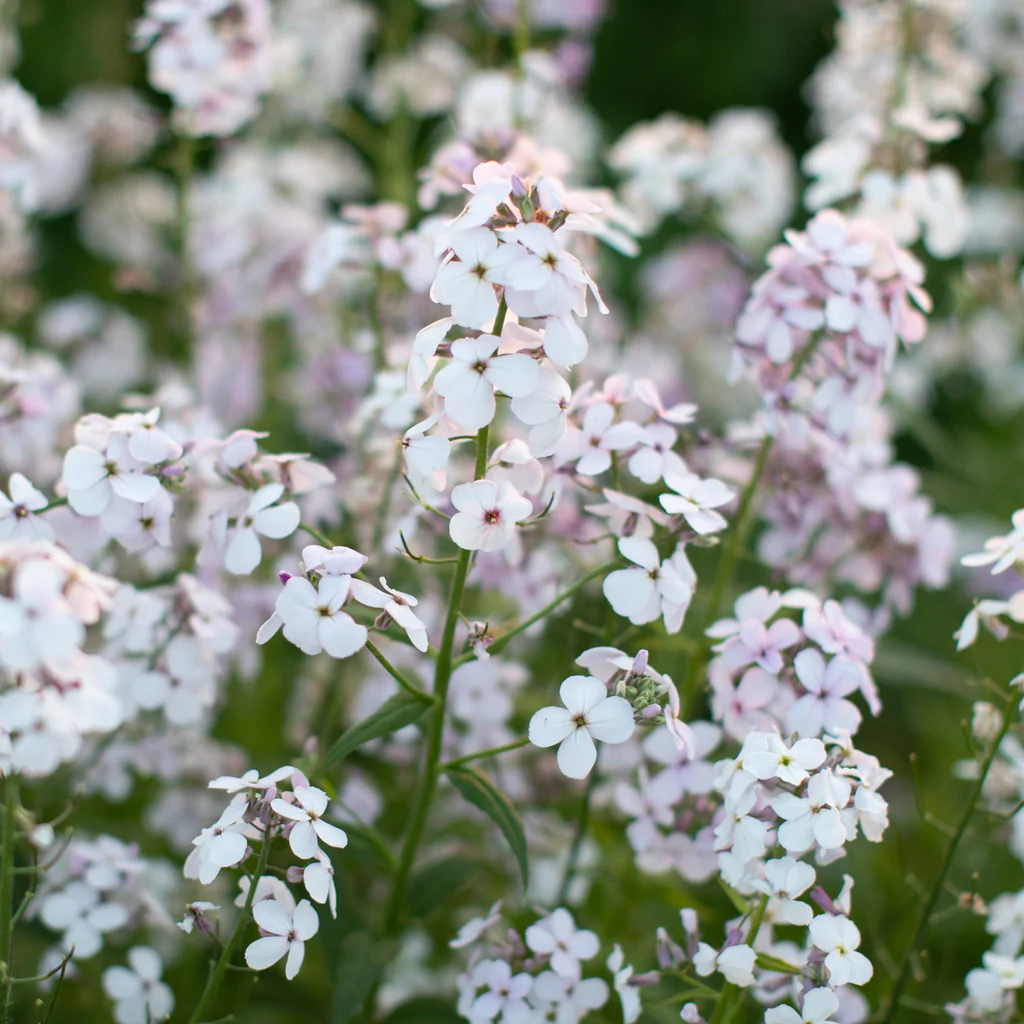
Dame’s rocket – the plant’s needs and cultivation
Are you wondering how complicated dame’s rocket is to grow? The plant doesn’t need a lot for its proper development, so it’s often picked by gardeners – even beginners. Just stick to several simple rules, and the plant will grow properly.
The soil for the plant’s growth and cultivation should be fertile. Make sure it’s loose enough as well. Thanks to this, the water won’t stand in the plant’s roots, which might be harmful. As for the soil pH, it should be alkaline or neutral.
Dame’s rocket prefers half-shade, so make sure to pick slightly shaded locations for it, instead of full sun. Regardless, avoid extremes, and don’t plant it in a completely dark spot. Too little sun rays affect the quality of blooming, and most importantly, the number of flowers. The soil around the dame’s violet should also be regularly checked and weeded if necessary. It’s because the plant doesn’t tolerate weeds, and if they grow nearby, they might hinder its development.
Hesperis matronalis needs a support for its stems, especially during the blooming season, to protect them from bending and breaking. The plant is frost-resistant, which is good news for gardeners. Thanks to this, there’s no need to move the perennial to a warmer spot.

Does dame’s rocket need regular watering and feeding?
Dame’s rocket prefers having moist soil. For gardeners who decide to plant it in their yards, this means they have to keep the soil at the right moisture levels. It should be always humid. A shaded location helps maintain this state, as it protects the soil from intense water evaporation. But remember that too intense watering and water standing in the soil isn’t desirable. This might cause the perennial to rot or develop grey mold.
Dame’s rocket is an undemanding plant. If planted in the correct spot, it doesn’t require any additional stimulation by fertilizers.
Dame’s rocket – plant’s propagation
Are you wondering how to propagate dame’s rocket? You can sow its seeds directly into the target location. Schedule planting the seeds for spring. Keep in mind that it’s a biennial plant, and it withers after 3-4 years. It means new plants have to be added periodically to enjoy them in the garden for a longer time. You can also prepare seedlings in winter, and plant them in the target spot in spring.
Dame’s rocket often self-sows. Seeds falling down begin sprouting after some time.
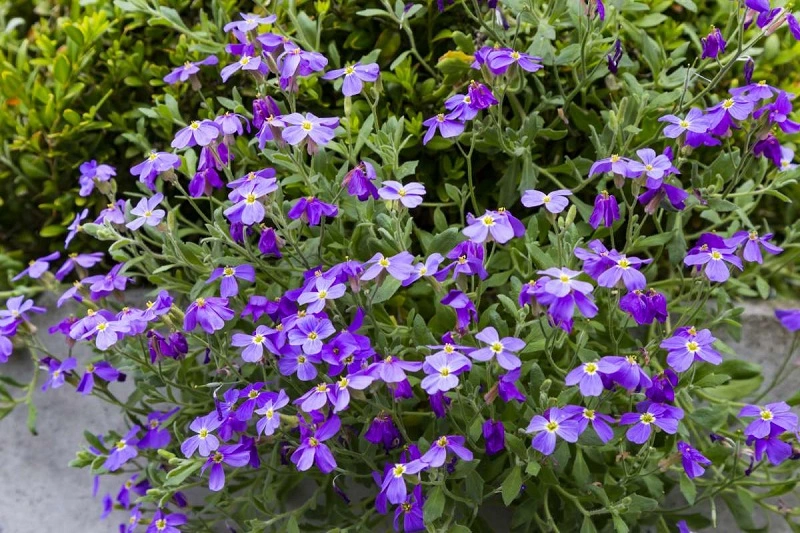
Dame’s rocket – check what you should know about this plant
Dame’s rocket doesn’t just look pretty and smell beautiful in the evening. Remember that its flowers are considered poisonous, but the rest of the plant is harmless – and because of this, it’s often used in various ways. Regardless, make sure to be cautious with it.
The plant’s edible seeds contain up to 50% of oil, and they are typically used in salads. The leaves are rich in vitamin C. Their taste is slightly bitter. They are a great decoration for desserts or an addition to salads. Note that when eaten in excess, they might induce vomiting. The plant is also turned into essential oils and used in perfume production.
What pests and diseases might harm dame’s rocket?
Dame’s rocket is a relatively resistant plant to pests and diseases. Most situations in which the plant withers are a result of improper taking care of it. Too intense watering and standing water might lead to fungi growth or rotting of the root system. Aphids are the only potential pests that might appear on its stems.
If the plant is planted in semi-darkness, its growth and blooming quality will be much lower than when planted in only slightly shaded spot. Remember that the sweet fragrance attracts various insects.
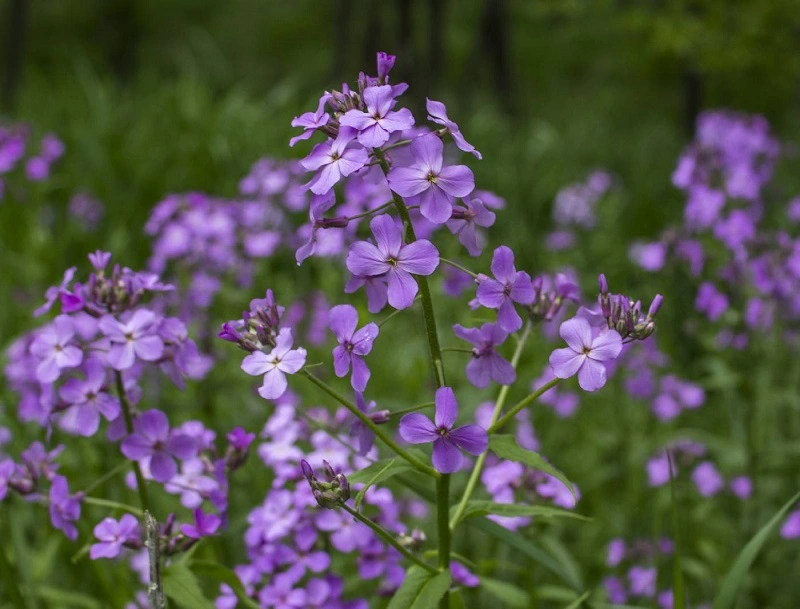
📍 What does dame's rocket look like?
Dame's rocket is a plant that grows up to 60-100 cm (ca. 2-3 ft) tall. It has characteristic hair and lanceolate leaves. Stems with florescence appear in the second year of its growth, developing up to 30 fragrant flowers on a single stem.
📍 What does dame's rocket smell like?
Dame's violet is a popular plant frequently planted in home gardens – mostly because of its strong smell appearing in the evening. The plant's flowers smell like lilies, but there's also a note of pinks in the fragrance. The scent is sweet, thanks to which it draws various insects, including butterflies.
📍 When to plant dame's rocket?
Dame's rocket is a perennial. The seeds are collected in summer, and planted in winter. After the seedlings grow and develop, they can be planted in their target location in spring. The plant often self-sows, but you can encourage the process.
📍 When does dame's rocket bloom?
The beautiful smell is not the only advantage of damask violets. They bloom in spring, starting in May. One can enjoy the beautiful flowers and their evening smell for three months.
Featured articles




